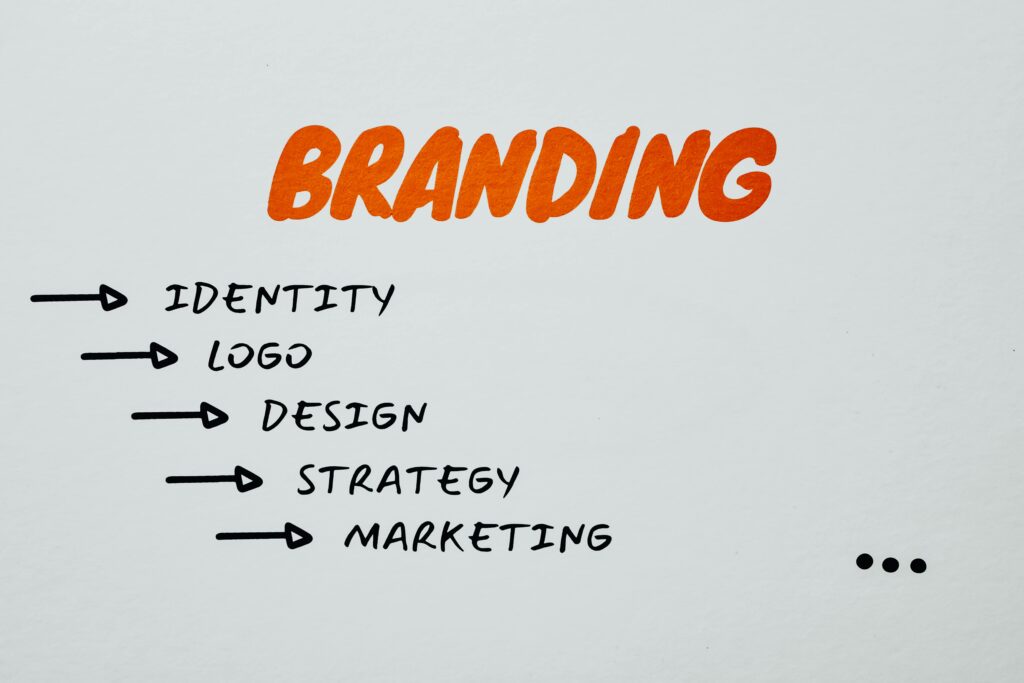Discover expert insights on how to build your brand building and brand your business effectively. Unlock strategies for building a strong business identity, from defining your brand values to crafting a memorable message. Explore the power of brand building and make your business the brand new favorite weapon in your industry.
Summary Table
Certainly, here’s a sample table summarizing key sections of the blog post:
| Section | Subsection |
|---|---|
| I. Introduction | Overview of brand building importance |
| II. Understanding the Basics | What is Brand Building? |
| Why is Brand Building Important? | |
| III. Key Components | Defining Your Brand Values |
| Crafting a Memorable Brand Message | |
| Designing a Distinctive Visual Identity | |
| IV. Strategies for Building | Building an Online Presence |
| Leveraging Social Media for Brand Growth | |
| Consistency Across Marketing Channels | |
| V. Case Studies | Examining Brands with Strong Identities |
| VI. Overcoming Challenges | Addressing Branding Obstacles |
| VII. Measuring and Adapting | Key Metrics for Brand Success |
| Adapting Your Brand Strategy | |
| VIII. Conclusion | Summary and key takeaways |
Also see; Strategic Targeting: Reaching the Right Audience for Your Brand
Introduction
In the dynamic landscape of today’s business world, brand building stands as a pivotal process for establishing a robust business identity. As businesses strive for recognition and loyalty, understanding the essentials of brand building becomes paramount. This article delves into the core strategies required for building a strong business identity, examining why it matters and how it contributes to sustained success.
Understanding the Basics of Brand Building
What is Brand Building?
Brand building is the deliberate and strategic process of creating and enhancing a unique and identifiable image for a business. It goes beyond merely designing a logo or choosing a color scheme; it involves cultivating a distinct personality, values, and message that resonate with the target audience. A successful brand reflects the essence of the business, fostering trust, recognition, and customer loyalty.
Why is Brand Building Important?
The significance of brand building lies in its ability to set a business apart from its competitors. A well-established brand serves as a promise to customers, conveying reliability and quality. In the long run, a strong business identity contributes to customer loyalty, repeat business, and positive word-of-mouth marketing. This not only attracts new customers but also solidifies the business’s position in the market.
Key Components of a Strong Business Identity
Defining Your Brand Values
At the heart of brand building are the values that define your business. These values are the guiding principles that shape your company’s culture and behavior. They resonate with both employees and customers, forming a connection that goes beyond transactions. Consider renowned brands like Apple, with values centered around innovation and simplicity. To define your brand values:
- List Core Principles: Identify the fundamental principles that drive your business.
- Align with Mission: Ensure your values align with your business mission.
- Communicate Internally: Share and instill these values within your team.
Crafting a Memorable Brand Message
A compelling brand message is the voice of your business, encapsulating its essence in a concise and memorable manner. Your message should evoke emotion, resonate with your target audience, and communicate the unique value your business offers. Consider Nike’s timeless “Just Do It” or Coca-Cola’s emphasis on happiness. To craft a memorable brand message:
- Understand Your Audience: Tailor your message to the preferences and needs of your audience.
- Be Clear and Concise: Ensure your message is easily understood and leaves a lasting impression.
- Consistency is Key: Maintain consistency across all communication channels.
Designing a Distinctive Visual Identity
Visual elements play a crucial role in brand recognition. Your logo, color scheme, and overall design should be distinctive and reflective of your brand personality. Think of the golden arches of McDonald’s or the iconic swoosh of Nike. To design a distinctive visual identity:
- Create a Memorable Logo: Invest in a professionally designed logo that encapsulates your brand.
- Choose Colors Wisely: Colors evoke emotions; select a palette that aligns with your brand’s personality.
- Ensure Consistency: Use the same visual elements across all platforms for instant recognition.
This article provides a foundational understanding of brand building, emphasizing the importance of defining values, crafting a compelling message, and designing a distinctive visual identity. In the next sections, we’ll explore actionable strategies for effective brand building, leveraging online platforms and social media to amplify your brand presence.
Also see; The Art of Branding: Crafting and Sustaining Your Image

Strategies for Effective Brand Building
Building an Online Presence
In the digital age, establishing a robust online presence is integral to brand building. Your online footprint serves as a virtual storefront, accessible to a global audience. To enhance your online presence:
- Optimize Your Website: Ensure your website is user-friendly, visually appealing, and reflects your brand identity.
- Content is King: Regularly publish high-quality, relevant content that showcases your expertise and engages your audience.
- Utilize SEO Techniques: Implement SEO strategies to improve your website’s visibility on search engines.
Leveraging Social Media for Brand Growth
Social media platforms provide unparalleled opportunities for connecting with your audience and amplifying your brand message. Choose platforms that align with your target demographic and business objectives. Tips for effective social media branding include:
- Consistent Brand Voice: Maintain a consistent tone and style across all social media channels.
- Visual Storytelling: Use images and videos to tell your brand story and create a memorable impression.
- Engage with Your Audience: Respond to comments, ask questions, and foster a sense of community.
Also see; Smart Strategies: Advertising on a Budget Made Easy
Consistency Across Marketing Channels
Consistency is the linchpin of successful brand building. Whether a customer interacts with your brand online, in-store, or through traditional marketing channels, the experience should be seamless and aligned with your brand identity. Ensure consistency by:
- Brand Guidelines: Develop comprehensive brand guidelines covering visual elements, messaging, and tone.
- Training for Employees: Educate your team about the importance of maintaining brand consistency.
- Regular Audits: Periodically review your marketing materials to ensure adherence to brand guidelines.
Case Studies: Learn from Successful Brands
Examining Brands with Strong Business Identities
Case studies offer valuable insights into the practical application of successful brand building strategies. Let’s explore a few examples:
- Apple Inc.: Renowned for innovation, Apple’s brand is synonymous with cutting-edge technology. Their commitment to sleek design, simplicity, and a focus on the customer experience has propelled them to the pinnacle of the tech industry.
- Dove: Dove’s Real Beauty campaign transformed the brand into a champion of body positivity. By aligning with societal values and promoting inclusivity, Dove successfully redefined its brand image.
These case studies illustrate the power of aligning brand strategies with core values and effectively communicating them to the target audience.

Overcoming Common Challenges in Brand Building
Addressing Branding Obstacles
Despite the benefits of brand building, businesses often encounter challenges. Common obstacles include:
- Inconsistent Messaging: Ensure your messaging is uniform across all channels to avoid confusion.
- Negative Publicity: Address negative feedback promptly and transparently to mitigate reputational damage.
- Evolution Over Time: Brands need to evolve, but it’s crucial to strike a balance between change and maintaining core values.
In overcoming these challenges, businesses can fortify their brand identity and foster positive relationships with their audience.
Measuring and Adapting: Assessing Your Brand’s Impact
Key Metrics for Brand Success
Measuring the success of your brand building efforts requires tracking key metrics. Some essential metrics include:
- Brand Awareness: Measure how well your target audience recognizes and recalls your brand.
- Customer Loyalty: Track repeat business, customer retention, and satisfaction levels.
- Online Engagement: Monitor social media interactions, website traffic, and online mentions.
Adapting Your Brand Strategy
The business landscape is dynamic, and brands must be agile in adapting to change. Strategies for adapting your brand include:
- Market Research: Stay informed about industry trends and shifts in consumer behavior.
- Feedback Loops: Solicit and act upon customer feedback to continuously improve your brand.
- Competitor Analysis: Understand your competitors and be prepared to pivot when necessary.
By consistently measuring and adapting, businesses can ensure their brand remains relevant and resonant with their audience.
Also see; Mastering Financial Management Strategies for Small Businesses: Your Key to Success
Conclusion
Brand building is a continuous journey that requires dedication, strategic planning, and a deep understanding of your business values. By defining your brand, crafting a compelling message, and embracing online and offline strategies, you can forge a strong business identity that stands the test of time. Remember, consistency and adaptability are key in navigating the ever-evolving landscape of business and consumer expectations.



